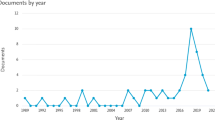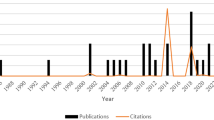Abstract
The optimization of a multiresponse manufacturing process is not a trivial task. Many authors have tried to overcome the particular difficulties observed in this knowledge area exploring the powerful mechanisms present in a great deal of techniques like design of experiments, response surface methodology (RSM), principal component analysis (PCA) and mathematical programming. In this sense, this paper presents an alternative hybrid approach, combining RSM and data envelopment analysis (DEA), a popular linear programming technique useful to compare efficiency of decision making units. The basic idea is to optimize a set of multiple correlated responses of a well-defined manufacturing process using DEA as an algorithm for generated the singular objective function. This alternative proposal is compared to multivariate response surface methodology, a stochastic approach based on the PCA, a multivariate statistical technique usually employed with Taguchi multiresponse designs. Since a great number of manufacturing processes present sets of multiple correlated responses, a case study based in a five quality characteristics of a pulsed GMAW welding process is here presented to illustrate the comparative performance of two proposals. The results indicate close responses for both methods. In spite of this, DEA was considered better because its results are larger in parameters that we wanted maximize and are smaller in parameters we wanted minimize. All established constraints were not violated in both cases of DEA.


Similar content being viewed by others
References
Gunaraj V, Murugan N (2000) Prediction and optimization of weld bead volume for the submerged arc process—part 2. Weld J 11:331–338
Kim D, Kang M, Rhee S (2005) Determination of optimal welding conditions with a controlled random search procedure. Weld J 8:125–130
Song YA, Park S, Chae SW (2005) 3D welding and milling: part II—optimization of the 3D welding process using experimental design approach. Int J Mach Tools Manuf 45:1063–1069
Liao HC (2005) Multi-response optimization using weighted principal components. Int J Adv Manuf Technol 27:720–725
Paiva AP, Campos PH, Ferreira JR, Lopes LGD, Paiva EJ, Balestrassi PP (2012) A multivariate robust parameter design approach for optimization of AISI 52100 hardened steel turning with wiper mixed ceramic tool. Int J Refract Metal Hard Mater 30:152–163
Paiva AP, Paiva EJ, Ferreira JF, Balestrassi PP, Costa SC (2009) A multivariate mean square error optimization of AISI 52100 hardened steel turning. Int J Adv Manuf Technol 43:631–643
Paiva AP, Ferreira JR, Balestrassi PP (2007) A multivariate hybrid approach applied to AISI 52100 hardened steel turning optimization. J Mater Process Technol 189:26–35
Box GEP, Hunter WG, Macgregor JF, Erjavec J (1973) Some problems associated with the analysis of multiresponse data. Technometrics 15:33–51
Harrington J (1965) The desirability function. Ind Qual Control 21:494–498
Khuri AI, Conlon M (1981) Simultaneous optimization of multiple responses represented by polynomial regression functions. Technometrics 23:363–375
Liao HC, Chen YK (2002) Optimizing multi-response problem in the Taguchi method by DEA based ranking method. Int J Qual Reliab Manag 19:825–837
Paiva AP (2006) Multivariate response surface methodology: a correlated multiresponse optimization proposal for manufacturing process. PhD dissertation, Federal University of Itajuba, Brazil, p 243
Praveen P, Yarlagadda PKDV, Kang MJ (2005) Advancements in pulse gas metal arc welding. J Mater Process Technol 164–165:1113–1119
Montgomery DC (2001) Design and analysis of experiments, 4th edn. Wiley, New York
Derringer G, Suich R (1980) Simultaneous optimization of several response variables. J Qual Technol 12:214–219
Kao C, Liu ST (2014) Multi-period efficiency measurement in data envelopment analysis: the case of Taiwanese commercial banks. Omega 47:90–98
Liao HC (2005) Using N-D method to solve multi-response problem in Taguchi. J Intell Manuf 16:331–347
Kao L-J, Lu C-J, Chiu C-C (2011) Efficiency measurement using independent component analysis and data envelopment analysis. Eur J Oper Res 210:310–317
Doyle J, Green R (1994) Efficiency and cross-efficiency in DEA: derivations, meanings and uses. J Oper Res Soc 45:567–578
Charnes A, Cooper WW, Rhodes E (1978) Measuring the efficiency of decision making units. Eur J Oper Res 2:429–444
Liao HC (2004) A data envelopment analysis method for optimizing multi-response problem with censored data in the Taguchi method. Comput Ind Eng 46:817–835
Johnson RA, Wichern DW (2002) Applied multivariate statistical analysis, 5th edn. Prentice-Hall, New Jersey
Peres-Neto PR, Jackson DA, Somers KM (2005) How many principal components? Stopping rules for determining the number of non-trivial axes revisited. Comput Stat Data Anal 49:974–997
Todeschini R (1997) Data correlation, number of significant principal components and shape of molecules: the K correlation index. Anal Chim Acta 348:419–430
Box GEP, Hunter JS, Hunter WG (2005) Statistics for experimenters: design, innovation and discovery, 2nd edn. Wiley, New Jersey
Bratchell N (1989) Multivariate response surface modeling by principal components analysis. J Chemom 3:579–588
Köksoy O, Doganaksoy N (2003) Joint optimization of mean and standard deviation using response surface methods. J Qual Technol 35:239–252
Shanmugam R, Johnson C (2007) At a crossroad of data envelopment and principal component analyses. Omega 35:351–364
Acknowledgments
The authors would like to thank the Brazilian Government agencies CNPq, CAPES, FAPEMIG and IFSULDEMINAS for their support of the research.
Author information
Authors and Affiliations
Corresponding author
Additional information
Technical Editor: Fernando Alves Rochinha.
Rights and permissions
About this article
Cite this article
Rocha, L.C.S., Paiva, A.P., Paiva, E.J. et al. Comparing DEA and principal component analysis in the multiobjective optimization of P-GMAW process. J Braz. Soc. Mech. Sci. Eng. 38, 2513–2526 (2016). https://doi.org/10.1007/s40430-015-0355-z
Received:
Accepted:
Published:
Issue Date:
DOI: https://doi.org/10.1007/s40430-015-0355-z




